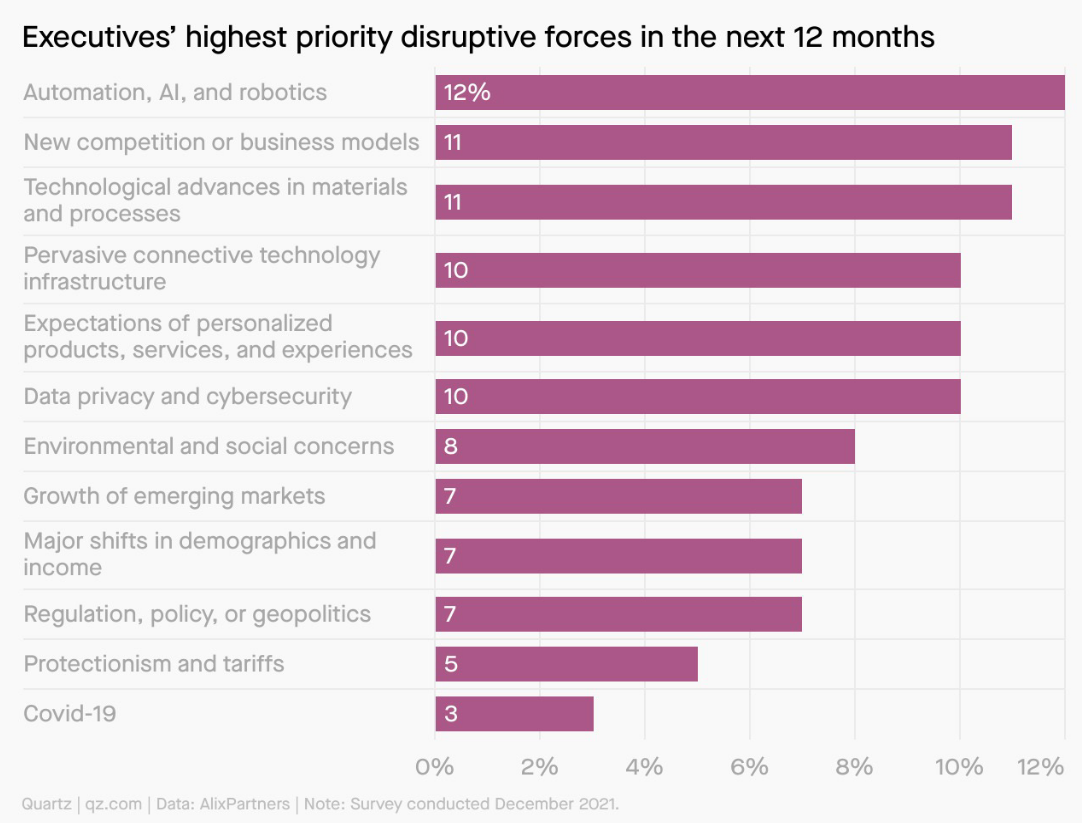![]() What’s top of mind for business executives going into 2022 and the year of the tiger?
What’s top of mind for business executives going into 2022 and the year of the tiger?
According to a survey conducted by Quartz, organizations prioritize AI, new business models, technology, and the environment over COVID-19 as the disruptive forces to focus on in the next 12 months. Surprisingly, expectations for personalized products, services, and experiences are tied for second place with concerns about data privacy and security. This presents a paradox as achieving enhanced personalization often requires more data, necessitating companies to strike a responsible and effective balance between privacy and personalization.

The most straightforward solution, although challenging, is to leverage your 1st party data. Your brand’s existing users have actively engaged with your brand, demonstrating an interest in your communications and aligning with your target customer profile. By utilizing this data, you can confidently deliver personalized experiences and offers that your audience is more likely to receive positively.
Sometimes building first-party data can feel like a challenging endeavor, akin to the old joke where a traveler asks a farmer for directions to Dublin, and the farmer replies, “You can’t get there from here.” This raises the question: How can you build first-party data without wasting resources on reaching out to disinterested individuals and potentially alienating them? Furthermore, how can you entice them to share their data on your platforms in a privacy-respecting manner while providing something valuable in return, such as utility or personalized experiences?
This is where brands start exploring new possibilities. By utilizing 2nd party data, they take a calculated risk by relying on someone else’s data to create personalized communications, aiming to effectively engage individuals rather than frustrate them. As long as you adhere to your data partner’s data use policies, you can maintain a balance between being intriguing and crossing the line into being intrusive.
Aggregators source 3rd party data from data owners who sell their data, creating an additional layer of separation. The quality of this data can vary, ranging from high to low, requiring a test and learn approach to identify the most effective creative strategies, calls to action, and targeting techniques for your brand.
The impending disappearance of cookies heightens privacy concerns and complicates personalization efforts. As new ID solutions emerge, it becomes clear that as privacy measures strengthen, consumers may encounter less personalized interactions and potentially face misaligned targeting.
To maintain a competitive edge, smart marketers must continuously innovate to achieve effective personalization and exercise sound judgement in utilizing data.

